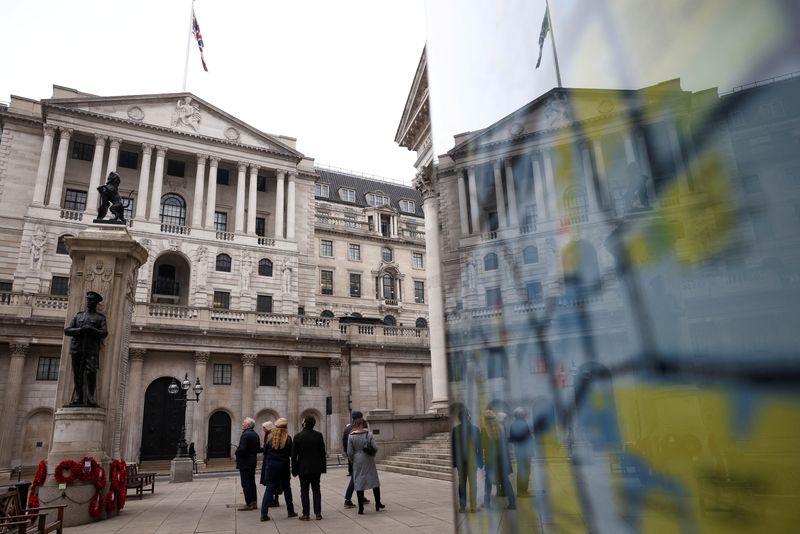LONDON (Reuters) -The Bank of England said on Thursday that it might not go ahead with plans announced in December to raise banks’ capital requirements in the coming quarter, given Russia’s invasion of Ukraine.
The BoE said major British lenders’ capital and liquidity position remained strong, but economic uncertainty meant it might not be appropriate to raise cyclical capital requirements that are linked to economic recovery.
“Global financial markets, particularly for commodities, have been volatile and uncertainty over the economic outlook has increased significantly,” the BoE said in a quarterly report from its Financial Policy Committee.
Margin calls on commodity derivatives had risen to an all-time high, but served as a “critical safeguard” for financial stability, the BoE said.
The BoE had said in December that it intended to raise banks’ counter-cyclical capital buffer (CCyB) – its main tool to smooth lending over the course of the credit cycle – to 2% from 1% in the in the second quarter of 2022, with full effect a year later.
While domestic risks had not changed since then, the global environment had, the BoE said.
“Given this uncertainty, the Committee will continue to monitor the situation closely and stands ready to vary the UK CCyB rate in either direction,” the FPC said.
The direct exposures of UK banks to Russia amount to 1% of their core capital at the end of 2021, the FPC said.
Deciding the CCyB rate would be easier once the BoE’s Monetary Policy Committee (MPC) published new economic forecasts in May, the FPC added.
The BoE also said it would delay an annual stress test of banks’ financial health, which had been suspended during the COVID-19 pandemic, until later in 2022.
Policymakers saw little risk to financial stability from a sharp rise in house prices, and expected borrowers to continue to be able to repay mortgages despite a sharp rise in the cost of living.
Poorer households were likely to struggle more, however.
(Reporting by David Milliken)






















